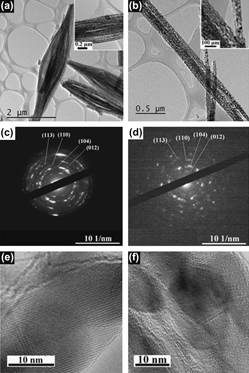Article contents
Facile synthesis and electrochemical properties of alpha-phase ferric oxide hematite cocoons and rods as high-performance anodes for lithium-ion batteries
Published online by Cambridge University Press: 05 March 2013
Abstract

Unique cocoon- and rod-shaped alpha-phase ferric oxide, hematite (α-Fe2O3) is prepared by a simple, scalable and surfactant-free chimie douce synthesis. The structure and morphology is confirmed by x-ray diffraction, field-emission scanning electron microscopy and high-resolution transmission electron microscopy. The electrochemical properties of α-Fe2O3 anodes are investigated using cyclic voltammetry, galvanostatic charge-discharge cycling and electrochemical impedance spectroscopy. The mesoporous α-Fe2O3 exhibited an initial discharge capacity >1741 mAh/g with excellent cycling performance and rate capabilities. The solvent used for the preparation of α-Fe2O3 plays a key role in determining the morphology of the materials, which greatly influenced its electrochemical properties.
- Type
- Articles
- Information
- Copyright
- Copyright © Materials Research Society 2013
References
REFERENCES
- 6
- Cited by


